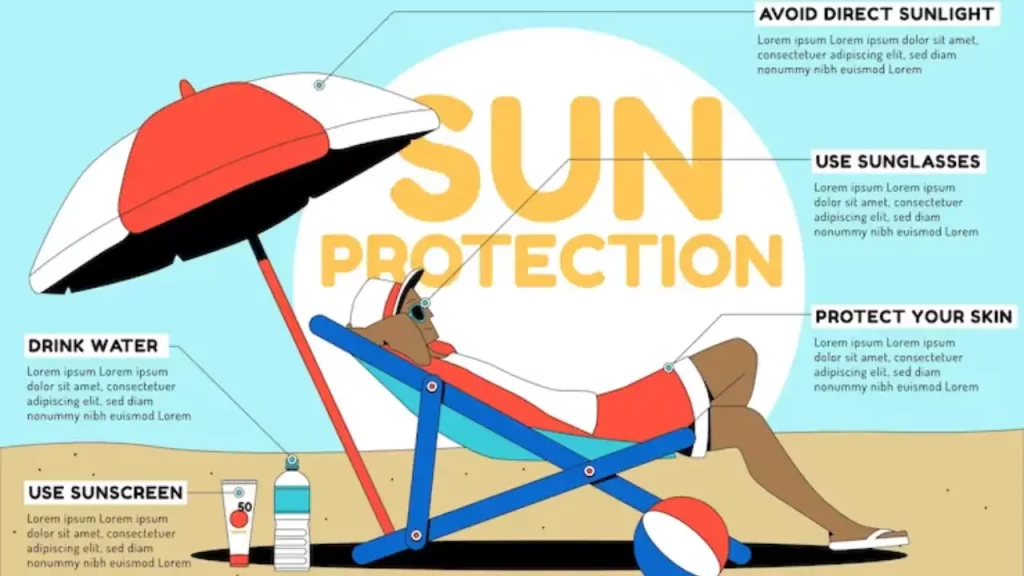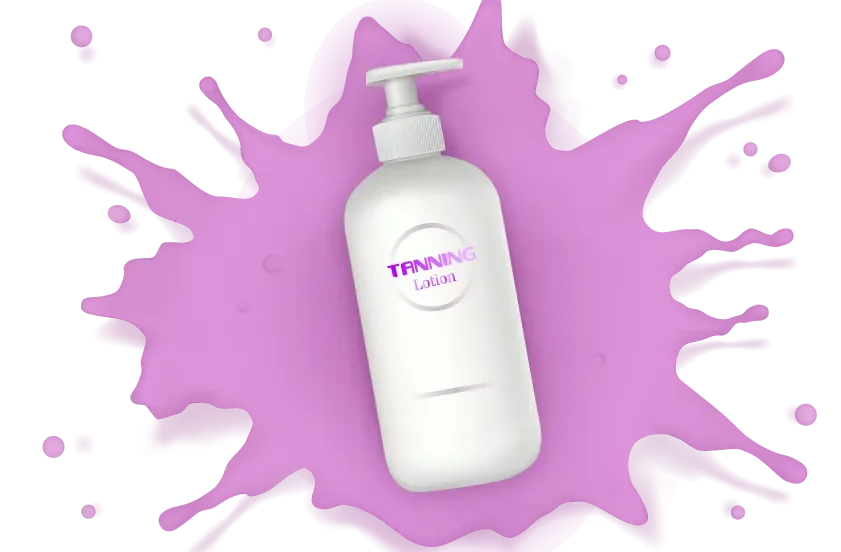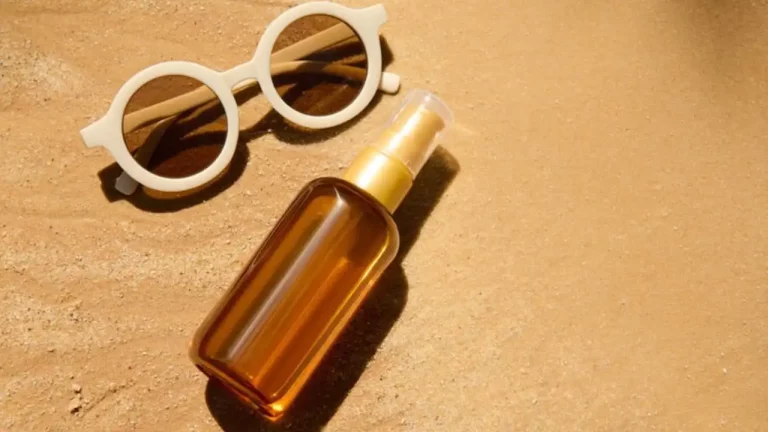5 Tips to Achieve a Tan on a Cloudy Day
If you’re looking to achieve a tan on a cloudy day, this post is for you. We’ll show you how to prepare your skin, pick the right location and get comfortable while tanning so that your tan will last all week.
If you want a tanned glow, it’s important to know how much UV exposure your body needs. But what if it’s cloudy outside? Will you still be able to tan? The answer is yes! Most experts say that you can still achieve a healthy glow even on cloudy days by using special techniques and products that give off more UVA rays than UVB rays.
How Long to Tan on Cloudy Day
- Your skin type will determine how long you should tan. If you have sensitive or dry skin, it’s best to avoid sun exposure altogether during cloudy days. On the other hand, if your skin is oily or acneic (or both), there’s no reason you shouldn’t get some vitamin D from UV rays. It’s important for those who live far from shade trees.
- The strength of sunlight can also impact how long it takes for someone with fair/olive complexions like mine to receive their desired bronze glow after spending an hour under direct sunlight without sunscreen protection. In temperatures ranging from 80-100 degrees.
How Long Should I Tan for?
A good tan results from hours of sun exposure, but how long should you wait?
The answer depends on your skin type. If you have fair skin, starting your tanning process is best when the weather is sunny and warm. If you have darker skin (or even medium-dark), it’s okay for as long as those with fairer complexions. Since their melanin levels won’t get burned away by UV rays like they would on a cloudy day. The rule here is: if there are clouds in the sky or some shade outside, wait until that clears up before getting into those swimsuits.
5 Tips a Tan on a Cloudy Day
- Prepared your skin
- Choose the right time and location.
- Pick the right spot, and use a tanning lotion.
- Make Yourself Comfortable
- Stay Hydrated

It’s just an hour or two less than usual. Try sleeping in another room. So there aren’t any distractions like TV shows or other activities happening around you. At the same time, trying not to wake up early too often during those days when it’s still dark out at 7 am.
Prepare Your Skin
- Use a moisturizer before you tan.
- Apply a tanning oil to your skin before applying the self-tanner. This will help keep your skin hydrated and prevent any irritation from occurring during the application of the self-tanners.
- Exfoliate regularly to remove dead cells, which can cause irritation when applied directly onto the surface of your skin (and therefore make an unpleasant experience). You should do so at least once every two weeks, ideally twice weekly.
Choose the Right Time and Location
The best time to tan is in the morning or evening. The sun is not as strong at these times of the day. So your skin will not be cooked like it would if you were in direct sunlight. If possible, avoid getting a tan on days when there are clouds or overcast skies because this can cause your skin to look yellow and unhealthy.
You have to be realistic about where you’re going to tan. If it’s sunny out, the sun will be the main factor in achieving a good tan.
Ideally, choose somewhere with good ventilation and away from direct sunlight or windy conditions. You want your skin to stay cool while trying to achieve that perfect golden glow.
Pick the Right Spot, and use a Tanning Lotion
The best way to achieve a tan on a cloudy day is to choose the right spot.
You want a spot with lots of sunlight and some shade. This will help you get that golden glow without turning orange or red, which can happen if you’re in direct sunlight for too long (or at all). You also want to avoid windy conditions, so your hair doesn’t fly around when it gets stirred up by gusts of air from the ocean waves. And lastly, don’t worry about bugs or other unwelcome visitors. If there are any insects around, stay away from them until they’ve moved on. Your skin needs healing after being exposed for too long (even if it’s just for one day).
- Use a Tanning Lotion. The first step to achieving a tan on a cloudy day is using a tanning lotion that contains skin-friendly ingredients, like Vitamin D3 and natural oils. You can also use it before you go out in the sun, giving you an even color all over your body. This will protect your skin from burning and prevent damage from occurring while letting the rays of nature do their job.
- Apply Moisturizer Before Going Outdoors: If you apply moisturizer before going outside. It will help keep the moisture in and ensure that everything is nice and smooth for those rays hitting your face or hands (or whatever area). It will also keep them from drying out quickly once they’ve been exposed to sunlight again after bathing/showering/etcetera.
Make Yourself Comfortable
- The sun’s rays can cause dehydration, so keep yourself well-hydrated by drinking plenty of water throughout the day.
- Wear loose clothing to avoid rubbing against your skin or getting irritated from tight clothes that prevent air circulation.
- Wear a hat or cap to cover your face if you’re going to be outside in direct sunlight for long periods. This will help reduce the risk of sunburns on sensitive areas like the cheeks and nose area, where many tiny blood vessels could quickly become damaged by overexposure (see image).
- Wear sunglasses with UV protection lenses such as mirrored or dark brown polarized ones. They’ll help block out some glare while letting light through enough so that you can see clearly while wearing them. If not possible due to budget constraints, try using reflective stickers on their sides; these work fine when appropriately applied onto other items such as hats/caps, etcetera.
Stay Hydrated
- Drink plenty of water before, during, and after tanning.
- Water helps keep skin hydrated.
- Drinking water helps prevent dehydration. Dehydration can lead to sunburn and other irritations on your skin, so stay hydrated.
How Do I Tan Even When It’s Cloudy?
If you want to achieve a tan on a cloudy day, there are several ways to do so. The first step is to ensure that your skin is free of makeup and moisturized before applying any self-tanner or spray tan. Next, choose the method that best suits your needs.
- Tanning Bed: A tanning bed will give you the longest-lasting results and can be used if available at the beach or pool. However, they’re expensive and not easily accessible everywhere (e.g., some hotels don’t have them). For this reason, I recommend using self-tanners instead because they’re cheaper and more accessible than visiting a salon whenever my skin needs color enhancement.
Can you tan when it’s cold?
Yes, you can. If a cloudless day is your ideal weather to get a nice tan, you can do it. But expect different results as if it were warmer outside. On a cloudy day, there won’t be enough UV rays hitting your skin and therefore producing tans. However, this doesn’t mean you can’t get yourself some color at all; know that it will take longer than usual for this method to work its magic on your skin (usually between 30 minutes and two hours).
When should I moisturize?
If possible (and depending on how much sun exposure has been had), make sure that after applying lotion/moisturizer before stepping into the sun or going out into nature’s rays without any protective barrier between them and their target area. Hands/face, etc., apply another layer before going back inside again so they don’t feel too dry while still being covered by clothing such as shirts or jackets, which may irritate due.
Do clouds block UV rays?
One thing to remember is that clouds do not block UV rays. The sun’s light is comprised of both visible and infrared wavelengths, but clouds only reflect the visible part of the spectrum. Clouds do not block infrared rays, which are responsible for tans (as well as some other things).

You can get a tan if you’re out in the sun for too long, even if there are no clouds around. This happens because your skin gets darker when exposed to UV light. However, since most people aren’t spending all day under cloud cover like Miley Cyrus does on her “Bangerz” tour bus whenever she goes away from home, we’ll assume this isn’t happening then it might seem like your body is getting an unnatural shade after being out in direct sunlight all day long without protection from any sheltering canopy above us. Humans enjoy spending time outside without getting burned by harsh rays from above us while trying our best not to look directly at them!
What is the best temperature to tan outside?
The best temperature to tan outside is between 68-76 degrees. You can find this by looking at your local weather forecast or checking out a thermometer. If there are clouds in the sky, it will be harder for you to tan because of your lack of sunlight exposure.
In addition to seeing how much time you have before sunset, it is also important to know what time of day it will be when you start your tanning session so that you can plan accordingly!
Can you get sunburned on a cloudy day?
You can still get sunburned on a cloudy day, but it will happen more slowly. If enough UV light comes through the clouds to cause you to burn (you’d have to be incredibly unlucky or protected not to get burned), then you’ll end up with some pretty nasty burns.
The thing about clouds is that they don’t block all of the sun’s rays. They reflect them into space instead. This means that if there’s a cloud covering up most of your skin, but it isn’t thick enough for protection from direct sunlight (like what happens when it rains), then any UV rays that do reach your body will be bouncing around inside those clouds until they get an area. Where they can hit you directly again; this could take hours or even days, depending on how strong those rays were when first entering through said cloud layer.
How long does it take to tan on a cloudy day?
The answer to how long it takes to tan on a cloudy day is: it depends.
Your tan will be more gradual if you live in an area with very few clouds and little or no rain. You may not even notice that you’ve been sunning yourself all afternoon. But if you live in one of those rare places with quite a bit of cloud cover, your tan might take longer than usual because those clouds are blocking the UVB rays.
The same goes for UVA rays (which cause skin damage), too. Clouds also block them during most parts of the year but remember that this applies only to clouds containing more than 50% water vapor.
Conclusion
Preparation is key to getting the most out of your time in the sun, so ensure that you are well-hydrated and have plenty of sunscreens. If all else fails, remember that there are many ways to get a tan without going outside. These include using self-tanning lotions or sprays or just eating foods containing vitamin D, such as salmon or mackerel, naturally producing melanin within your body.
To sum up, the key is to be proactive if you have a cloudy day and want to tan. Using products like sunless tanning lotions and sprays, you can get your desired tan at any time of year, no matter the weather conditions. And with these tips, how long does it take to tan outside on cloudy days? We hope this guide has given you some valuable insight into tanning during any season.






Cheers